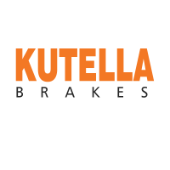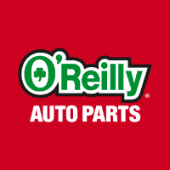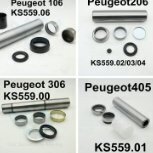-
Welcome to Auto Parts Forum
Whether you are a veteran automotive parts guru or just someone looking for some quick auto parts advice, register today and start a new topic in our forum. Registration is free and you can even sign up with social network platforms such as Facebook, X, and LinkedIn.
-
Similar Content
-
Unlocking Savings and Sustainability: Used Toyota Parts from GreenGears Auto Limited
- toyota
- used parts
- (and 1 more)
- 0 replies
- 234 views
-
Explore Top-Quality Brake Pads for Toyota Models at Our Factory!
By garryhe,
- toyotabrakepads
- toyotacorollabrakepads
- (and 1 more)
- 0 replies
- 476 views
-
- 2 replies
- 1,049 views
-
- 2 replies
- 732 views
-
- 4 replies
- 1,054 views
-
-
Similar Topics
-
By austinbearing
Hello, everyone
We are a leading automotive bearing manufacturer from China
We produce Peugeot Renault and some other automotive bearings
We also produce rear axle shafts for Peugeot cars
You can contact me if you're interested
This is our company website
link hidden, please login to view
WhatsApp: +8613775640157
E-mail: [email protected]
catalogue.docx
-
By garryhe
Products Overview
Whether it’s semi metallic brake pads or ceramic brake pads, KETULLA’S expertise and innovation are completely reliable – we have been for over 23 years.
We are one of brake system suppliers and major in manufacturing brake pads for cars in a variety of different cars models, we cover 2351 different types brake pads models– rear brake pads, front brake pads for cars, trucks & Suvs, is your strong and reliable partner supplier.
Your Benefits
In the braking system industry in China our products have obtained a lot of certificates based on its excellent quality. And visually, our brake pad production formula and layer process and quotation are also at the forefront of development in China.
Ketullabrakes brake pads have obtained link hidden, please login to view link hidden, please login to viewcertificates; Up to now, our excellent brake performance has enabled us to obtain cooperation from link hidden, please login to view link hidden, please login to viewaround the world, such as low-dust Ketullabrakes ceramic brake pads, which are very popular in the South American market, demonstrating our product quality control ability. Maximizes our braking power at high speeds and in emergency situations.

-
By Counterman
To hear my mother tell it, getting me up and ready for school in the mornings was an exercise in her patience. I don’t remember it quite that way, but I do recall regularly hearing the phrase “get your rear in gear, or you’re gonna be late!” These days, I’m generally the first person at work in the morning, spending an hour gearing up for the day ahead, and the only rear end gears I have to worry about are inside differential cases.
Identification of an axle/differential generally defaults to the ring gear diameter. Most OEMs refer to their axle assemblies using a combination of callouts, including ring gear, axle manufacturer (corporate, Dana, American Axle, Sterling, etc.) and diff cover bolt count. At the counter, we use these as shorthand for identifying the customer’s needed components. There are generally enough identifying characteristics for us to decide between any available options, but some diffs are a little different.
Dana axles are found in a wide variety of light trucks and SUVs, and are so well-known that we generally catalog parts based solely on the legacy Dana model number (with 30, 35, 44, 50, 60, 70, 80 being the most common), rather than ring gear diameter or cover bolt count. These Dana axles all feature “10-bolt” covers, so that’s a non-starter to an identification conversation. The model 50, 60 and 70 all share a diff cover design, so size and shape won’t help there, either. The Model 50 was used exclusively as a Ford front differential, leaving the 60 and 70 as the only confusing rear option. Identification through casting or tag numbers, when available, is still the best option. Ring gear diameter for each model is as shown here:
MODEL: 30 35 44 50 60 70 80
Diameter: 7.2” 7.562” 8.5” 9” 9.75” 10.5” 11.25”
Dana/Spicer has widely replaced most of these legacy models, and introduced a new model numbering convention. With names like M186, M226, M235 and more, we can now easily determine ring gear diameter, now expressed in millimeters as part of the model number. There can be some confusion, as Dana and the vehicle OEMs continue to refer to the legacy Dana model numbers these new models were based on. Application information continues to be of the utmost importance when selecting between similar Dana configurations!
Most of our differential parts sales are bearings, seals, gaskets and lubricants. Once ring gear diameter has been identified, we are usually in the clear, unless the customer also needs a replacement ring and pinion gear set. When selecting ring and pinion sets, we also require the gear ratio, which can be found by dividing the number of teeth on the ring gear by the number of teeth on the pinion shaft. A differential with a 3.42:1 gear ratio has 41 teeth on the ring gear, and 12 teeth on the pinion gear (41÷12=3.42). To rotate the ring gear (and therefore the wheels) one complete revolution, the pinion shaft (and the driveshaft) must turn 3.42 times. These numbers can be confusing, since “lower” gear ratios are actually represented by larger numbers, and vice-versa. (For example, a truck running 4.10:1 gears is geared lower than the same truck with 3.42:1 gears, even though the first number in the ratio is larger.)
Selecting the correct gear ratio for a stock replacement ring and pinion set is important for two reasons: First, altering the differential gear ratio on a rear-wheel-drive vehicle can affect fuel economy, cruising speed, towing performance, and engine RPM, either running at higher engine RPM (which occurs when a gear lower than the original is installed), or giving up low-end power and torque (which happens when a higher gear ratio than the original is used). The second reason concerns four-wheel-drive vehicles driven on pavement. The front and rear differentials must share the same gear ratio (within approximately 1%), otherwise binding or breakage may occur in the drivetrain, as the two dissimilar gearsets attempt to rotate at different speeds.
For off-road, performance, or racing applications, you may also encounter instances where the customer is changing their gear ratio. Understanding the effects of installing higher and lower ratio gearsets should help you both agree on the appropriate ring and pinion for their particular needs. So, whether you are called upon to supply a single bearing, or to assemble a full assortment of axle components, differential component sales needn’t be “diff”icult!
The post
link hidden, please login to view appeared first on link hidden, please login to view.
link hidden, please login to view








Recommended Posts
Create an account or sign in to comment
You need to be a member in order to leave a comment
Create an account
Sign up for a new account in our community. It's easy!
Register a new accountSign in
Already have an account? Sign in here.
Sign In Now